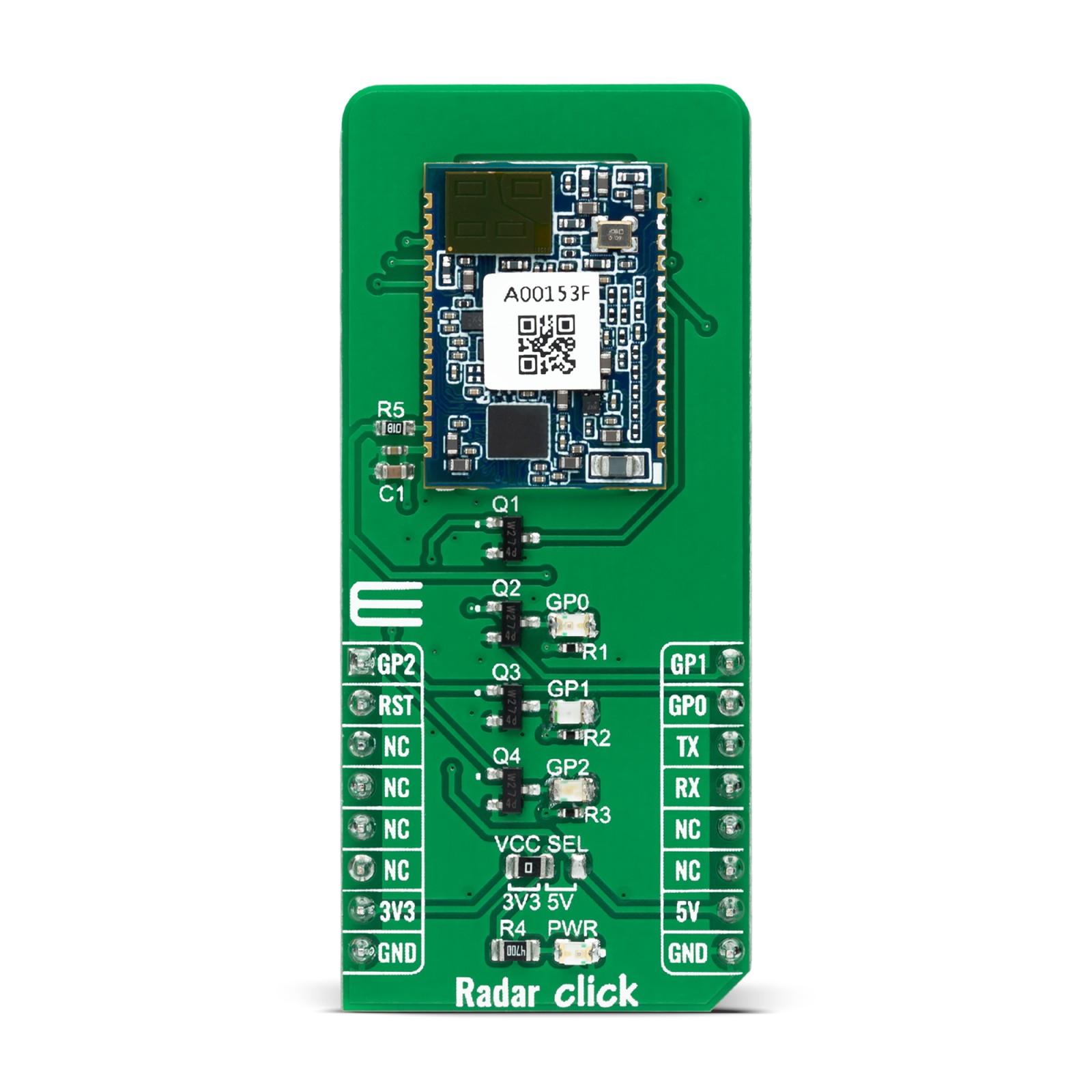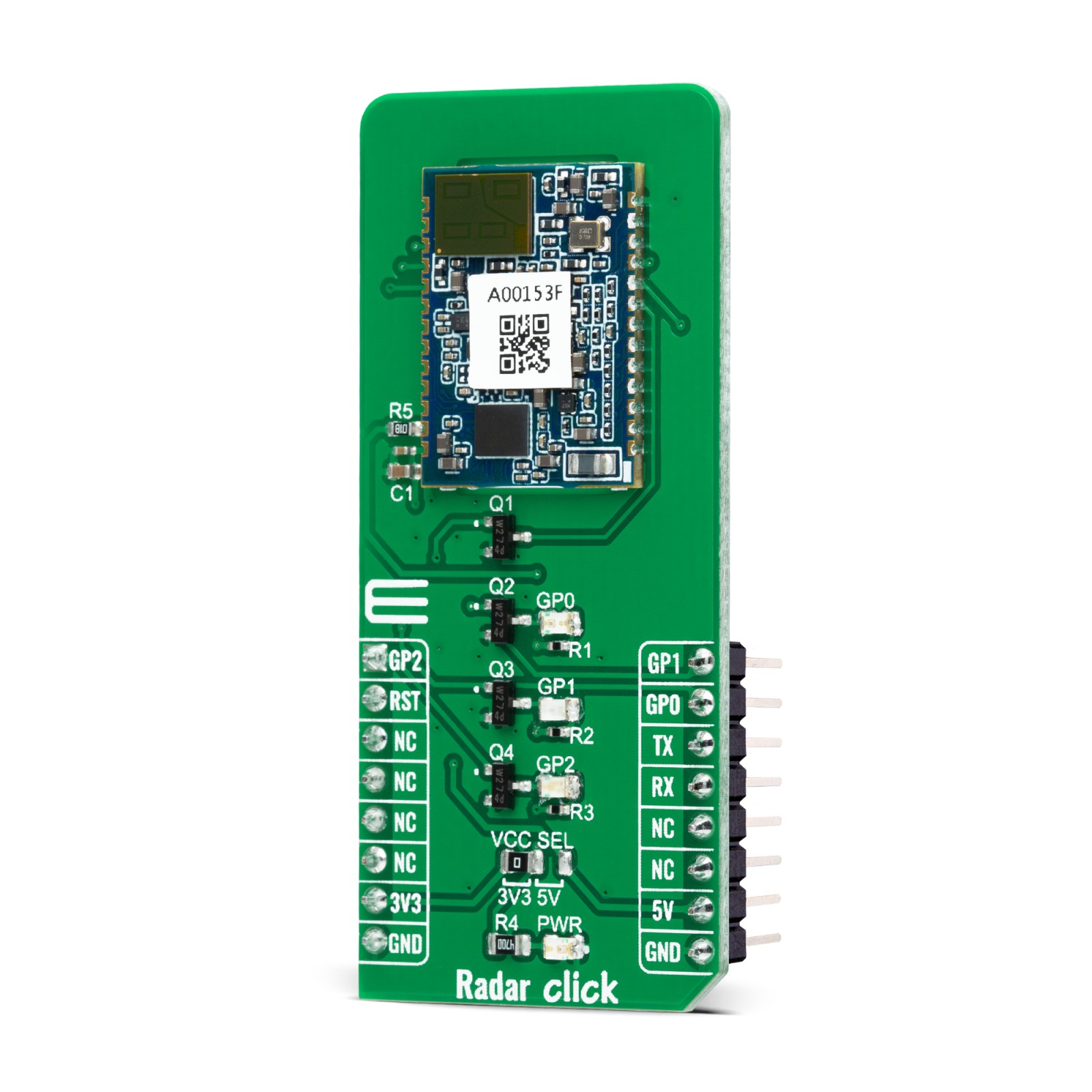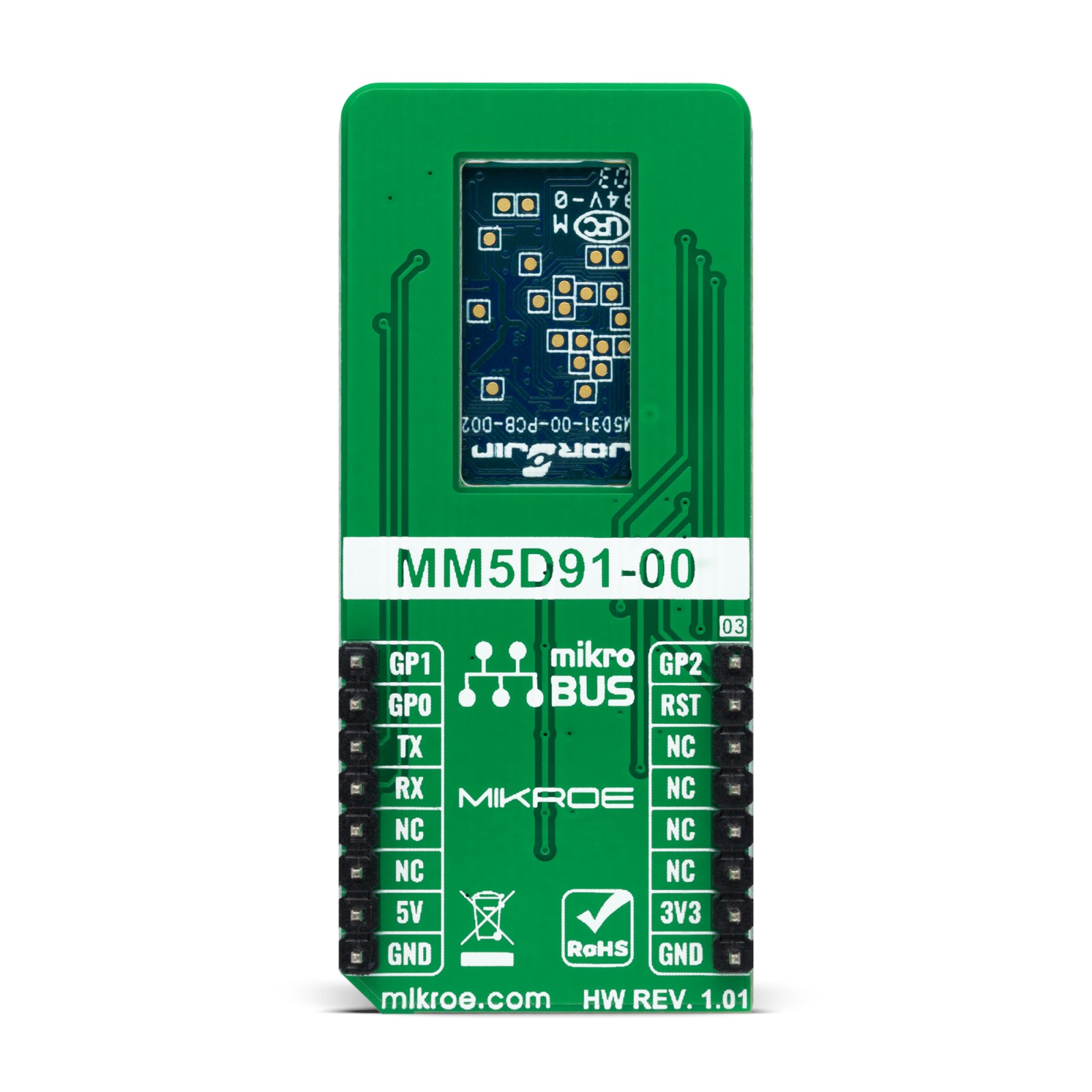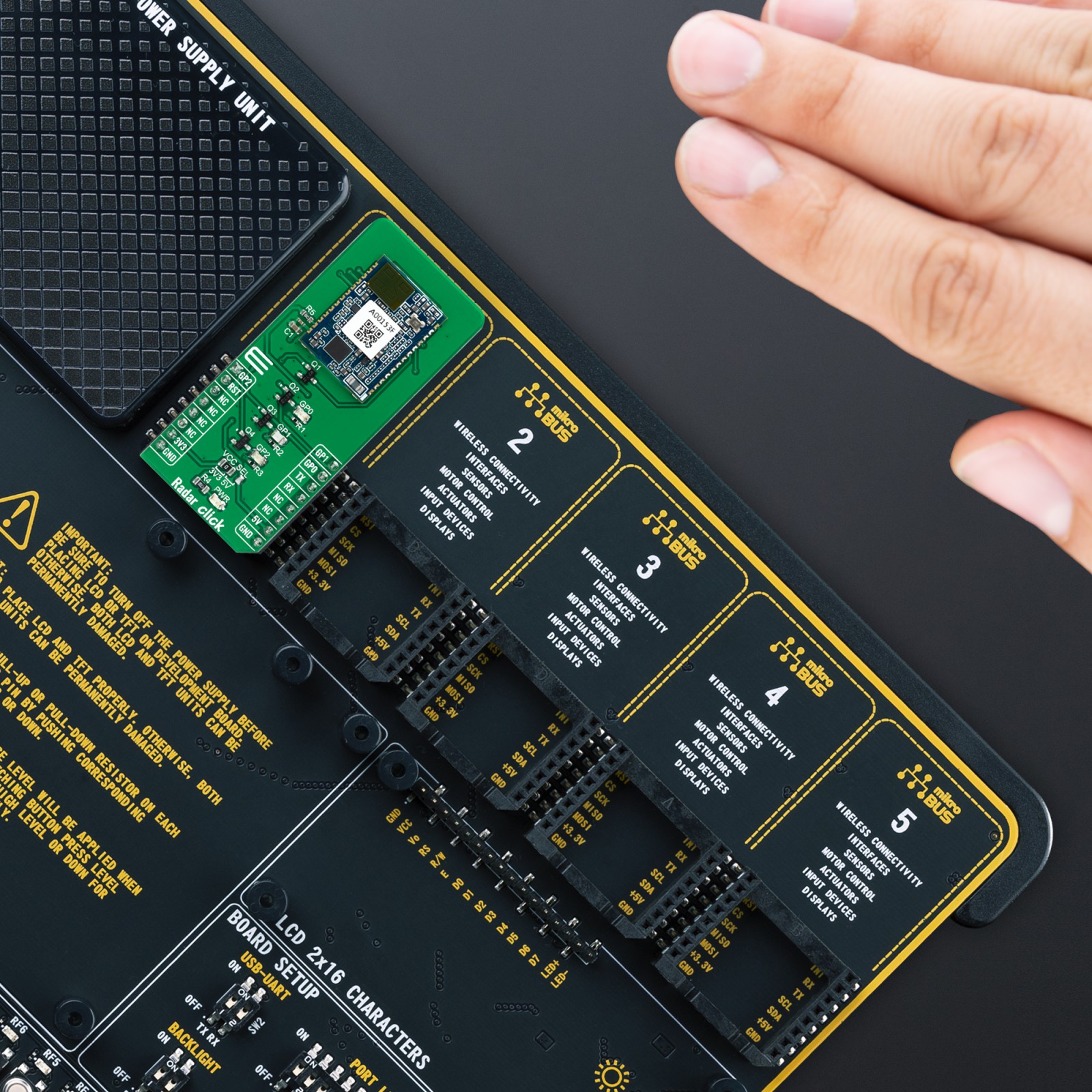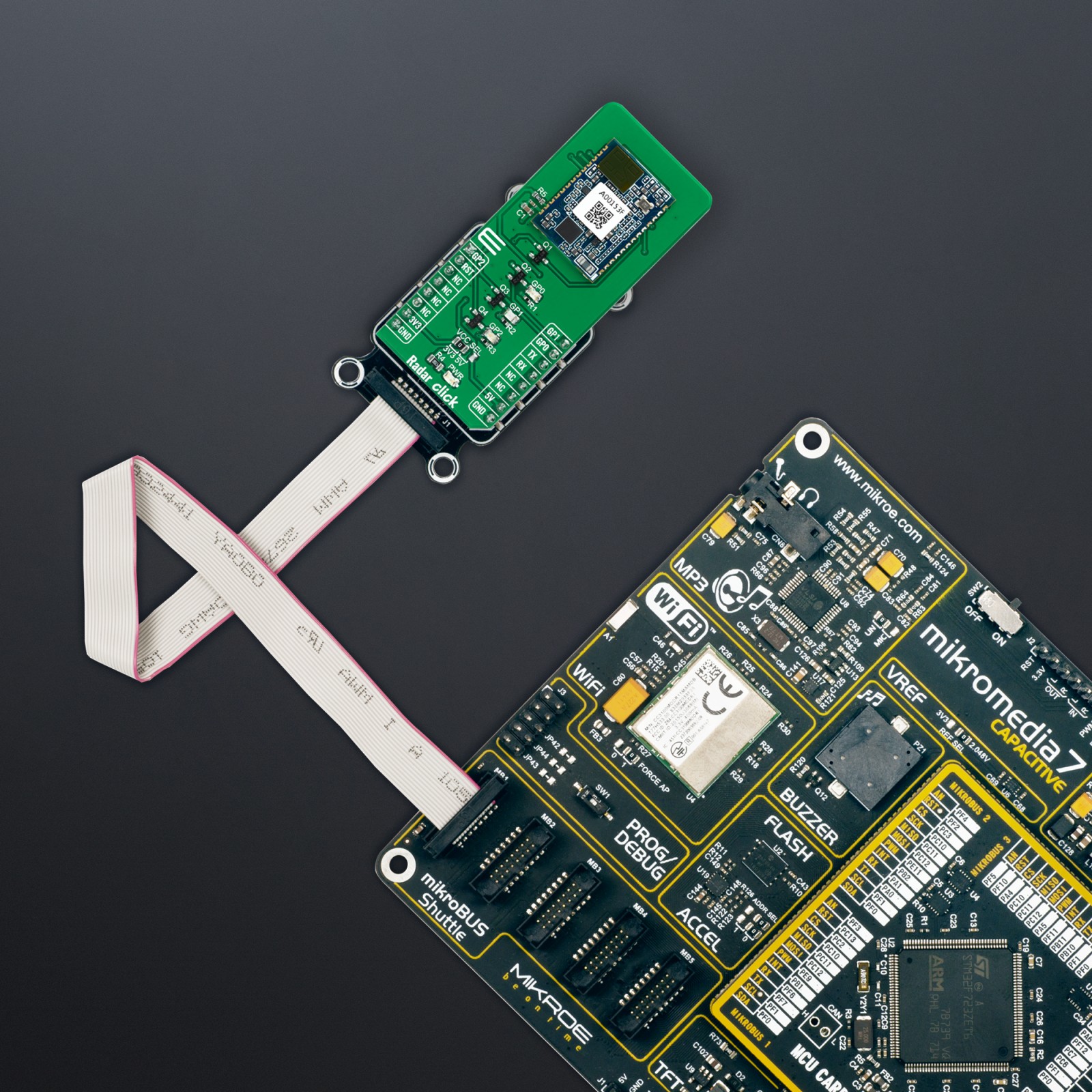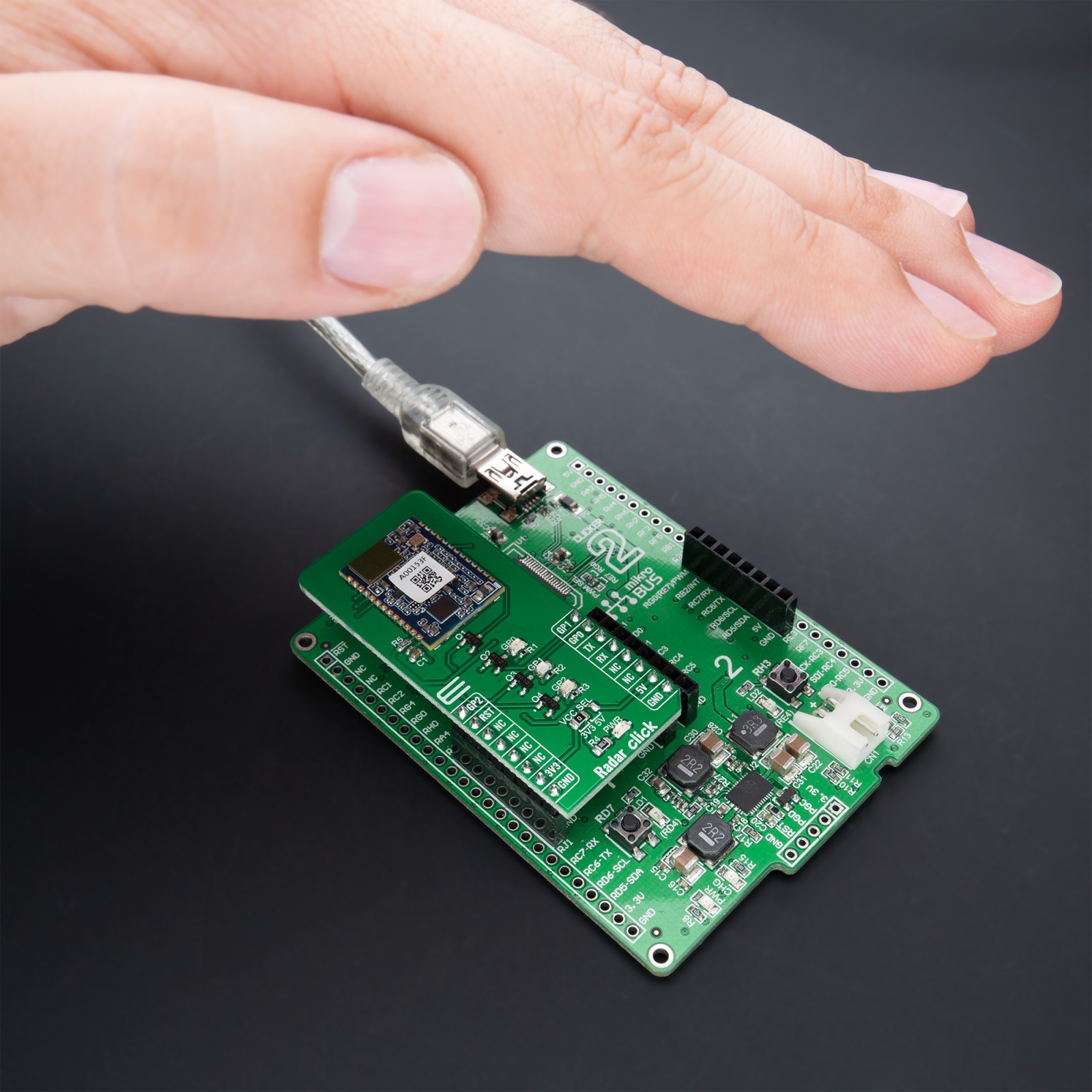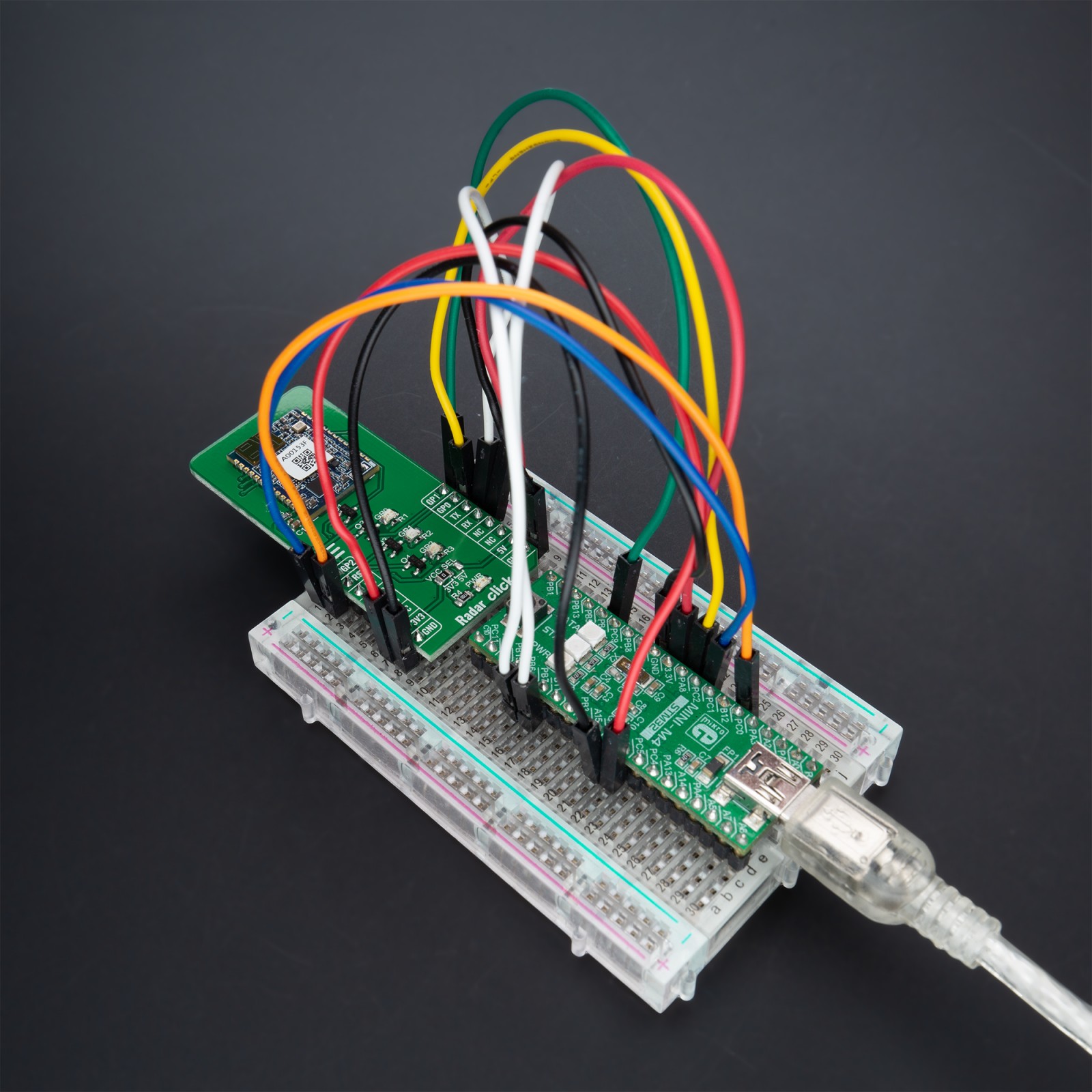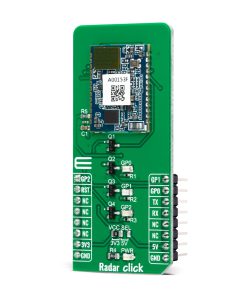Radar Click
R2,250.00 ex. VAT
Radar Click is a compact add-on board that uses short-wavelength electromagnetic waves, which objects in their path reflect, providing information on these objects’ range, velocity, and angle. This board features the MM5D91-00, a presence detection sensor module that integrates 60GHz mmWave technology that counts the number of people entering or exiting an entrance from Jorjin Technologies Inc. It includes the ARM Cortex-M4F based processor system, 1Tx, 3Rx antenna, and integrated regulator, alongside azimuth and elevation field of view of ±45° and ±40°. Its detection goes up to 10m for macro and 5m for micro motion with environmental-factors immunity such as temperature, wind, sunlight, and dust. This Click board™ is suitable for various presence sensing applications, from office and home to commercial buildings and more.
Radar Click is supported by a mikroSDK compliant library, which includes functions that simplify software development. This Click board™ comes as a fully tested product, ready to be used on a system equipped with the mikroBUS™ socket.
Stock: Lead-time applicable.
| 5+ | R2,137.50 |
| 10+ | R2,025.00 |
| 15+ | R1,912.50 |
| 20+ | R1,840.50 |

